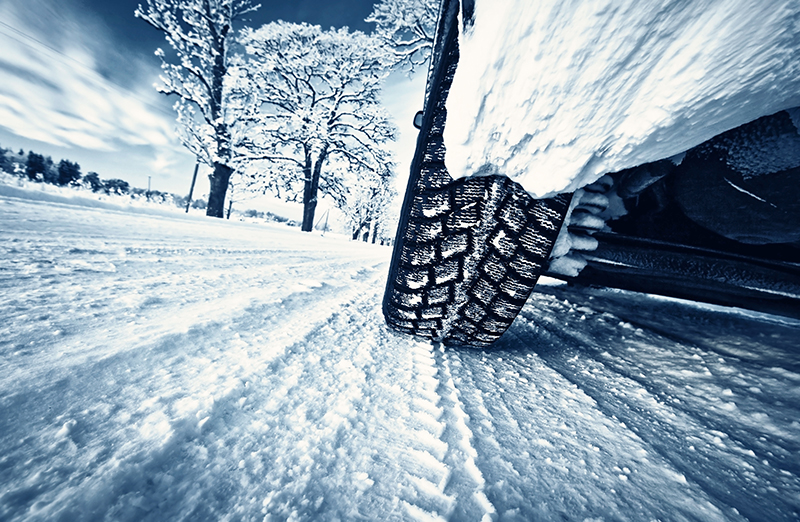Driving is dangerous no matter what, but winter driving adds some serious threading elements to the scenario. Snow and especially black ice are really critical elements you can face during winter and you need to know how to react.
Black ice is a glaze that forms on surfaces and it tends to look like the rest of the pavement on the road, making it virtually invisible for drivers. Driving over black ice can easily make the car tires lose traction, even if you have a 4-wheel drive truck, once you lose traction the car itself won’t help you.
Recognizing Black Ice
In order to increase your chances of avoiding an accident caused by black ice, first you need to learn how to recognize it, besides when and where it may form.
Black ice usually forms just about the freezing point. Commonly, at night or in the early morning when the temperatures are at their lowest, or when the sun isn’t around to warm the roads. Therefore, is important to keep track of the weather forecasts and traffic reports.
 If after a freezing night there is no other option than to sit behind the wheel and drive to work, stay alert and pay attention to the road. Look for black ice signs and keep your windshield clean for better visibility.
If after a freezing night there is no other option than to sit behind the wheel and drive to work, stay alert and pay attention to the road. Look for black ice signs and keep your windshield clean for better visibility.
Drive slowly and never use the cruise control in these conditions. Pay extra attention when driving near a tree-lined route or in a tunnel. Black ice also forms readily on bridges, overpasses and the road beneath overpasses.
How to React
If you are driving and see cars suddenly swerve for no apparent reason, black ice is a likely cause. Stay calm and don’t hit the brakes. Your best option at this moment is to be patient and pull over. Even if after a long hard-working day you are desperate to get home, is best to calm down and wait for better conditions.
If you didn’t have time to pull over and you hit unexpectedly black ice, don’t panic. You need to remain calm and avoid sudden moves or turns. In fact, you need to do as little as possible.
Lift your foot off the accelerator pedal and try to steer your car straight. Do not hit the brakes; in fact, avoid even touching them. Doing it so will likely cause you to skid. Black ice patches aren’t longer than 20 feet, so the idea is to slide over the ice in the direction the steering wheel is facing and hopefully your tires will soon find traction.
If possible, shift into low gear. Low gears will give you more control. Nonetheless, make a smooth shift; otherwise, you can begin skidding or spinning out of control.
If you feel the back end of your car sliding left or right, make a very gentle turn of the steering wheel in the same direction. If you try to struggle against it by steering in the opposite direction, you risk skidding or spinning out.

Accidents Happen Anywhere
Black ice can form basically anywhere. You don’t need to be driving on the highway or a scenic road to hit black ice. Even in your home’s driveway, you can be surprised by black ice.
In fact, it is very common for drivers to crash or scratch their cars against a tree or their own garage door. A car wrap is a great protection for these circumstances and the winter condition as well.
With a car wrap, you won’t be only adding an extra protective layer from, ice, snow, road salt, and superficial scratches, but you can change your cars look, with a completely different color or giving it an original and creative custom graphic.
Remember always to buckle up your seatbelt, pay attention to the road, look for black ice, drive slowly and protect your car with a cool, elegant car wrap. This way you will enjoy the winter avoiding unnecessary stress.

